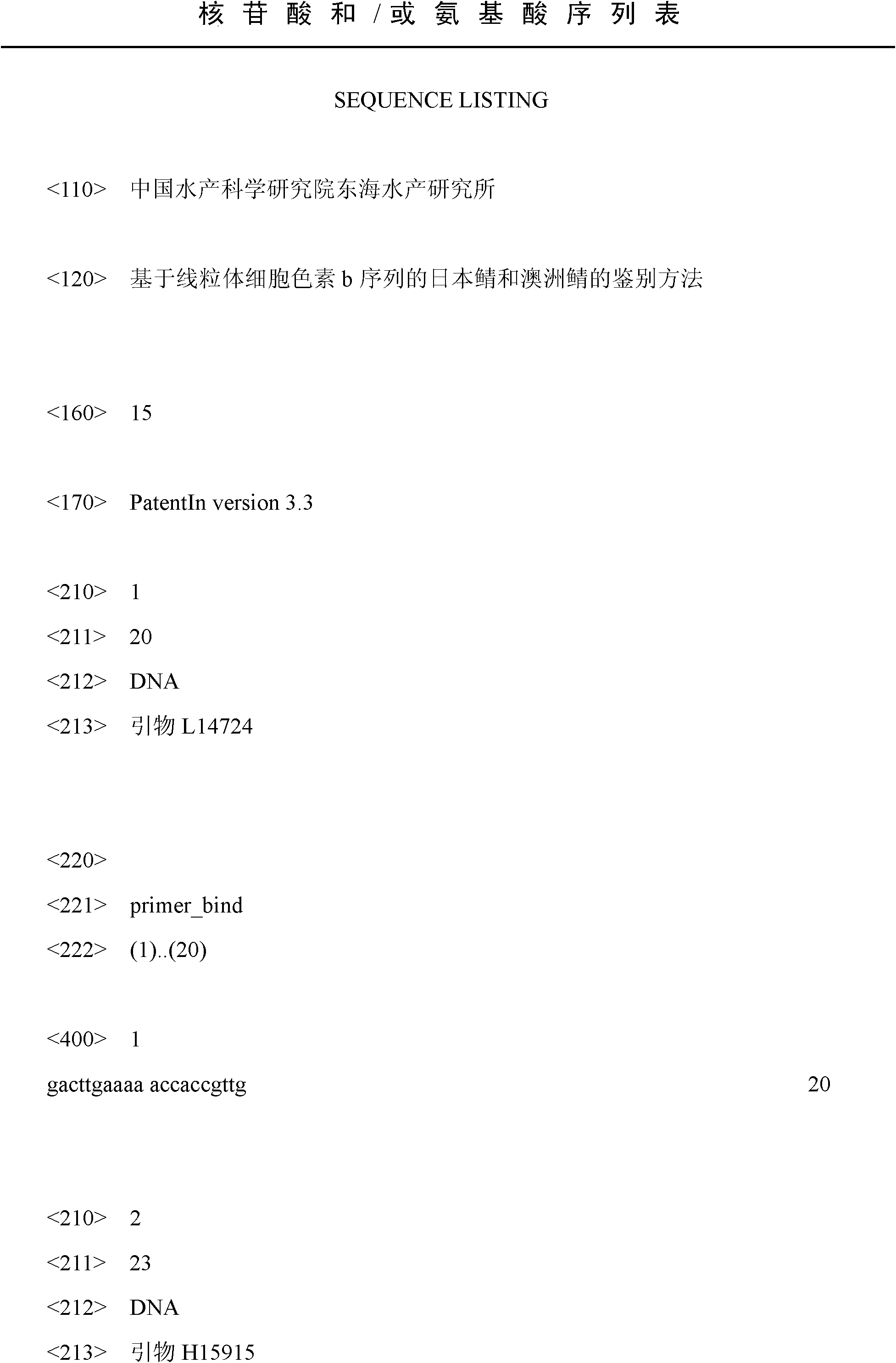Method for identifying pacific mackerel and slimy mackerel on basis of mitochondrial cytochrome b sequence
A cytochrome, mitochondrial technology, applied in the direction of biochemical equipment and methods, determination/inspection of microorganisms, etc.
- Summary
- Abstract
- Description
- Claims
- Application Information
AI Technical Summary
Problems solved by technology
Method used
Image
Examples
Embodiment 1
[0026] Both Japanese mackerel and Australian mackerel in the present invention are collected in Qinglan Port, Wenchang, Hainan.
[0027] A method for identifying Japanese mackerel and Australian mackerel based on the mitochondrial cytochrome b sequence, comprising:
[0028] (1) The total genomic DNA in the muscle tissue of Japanese mackerel and Australian mackerel was extracted by the phenol-chloroform method;
[0029] (2) PCR amplification reaction
[0030] The specific sequences of general primers L14724 and H15915 are: L14724, 5'-GAC TTG AAA AAC CAC CGTTG-3'; and H15915, 5'-CTC CGA TCT CCG GAT TAC AAG AC-3'.
[0031] The reaction system of PCR includes: 100ngDNA template, 0.2mmol / L dNTPs, each primer 1.0umol / L, 4.0mmol / L MgCl 2 , 5.0uL 10×reaction buffer (reaction buffer), 2U Taq polymerase, then add deionized water to a final volume of 50uL;
[0032] The amplification procedure is as follows: pre-denaturation at 94°C for 5 min; denaturation at 94°C for 45 s, annealing a...
PUM
 Login to View More
Login to View More Abstract
Description
Claims
Application Information
 Login to View More
Login to View More - R&D
- Intellectual Property
- Life Sciences
- Materials
- Tech Scout
- Unparalleled Data Quality
- Higher Quality Content
- 60% Fewer Hallucinations
Browse by: Latest US Patents, China's latest patents, Technical Efficacy Thesaurus, Application Domain, Technology Topic, Popular Technical Reports.
© 2025 PatSnap. All rights reserved.Legal|Privacy policy|Modern Slavery Act Transparency Statement|Sitemap|About US| Contact US: help@patsnap.com



